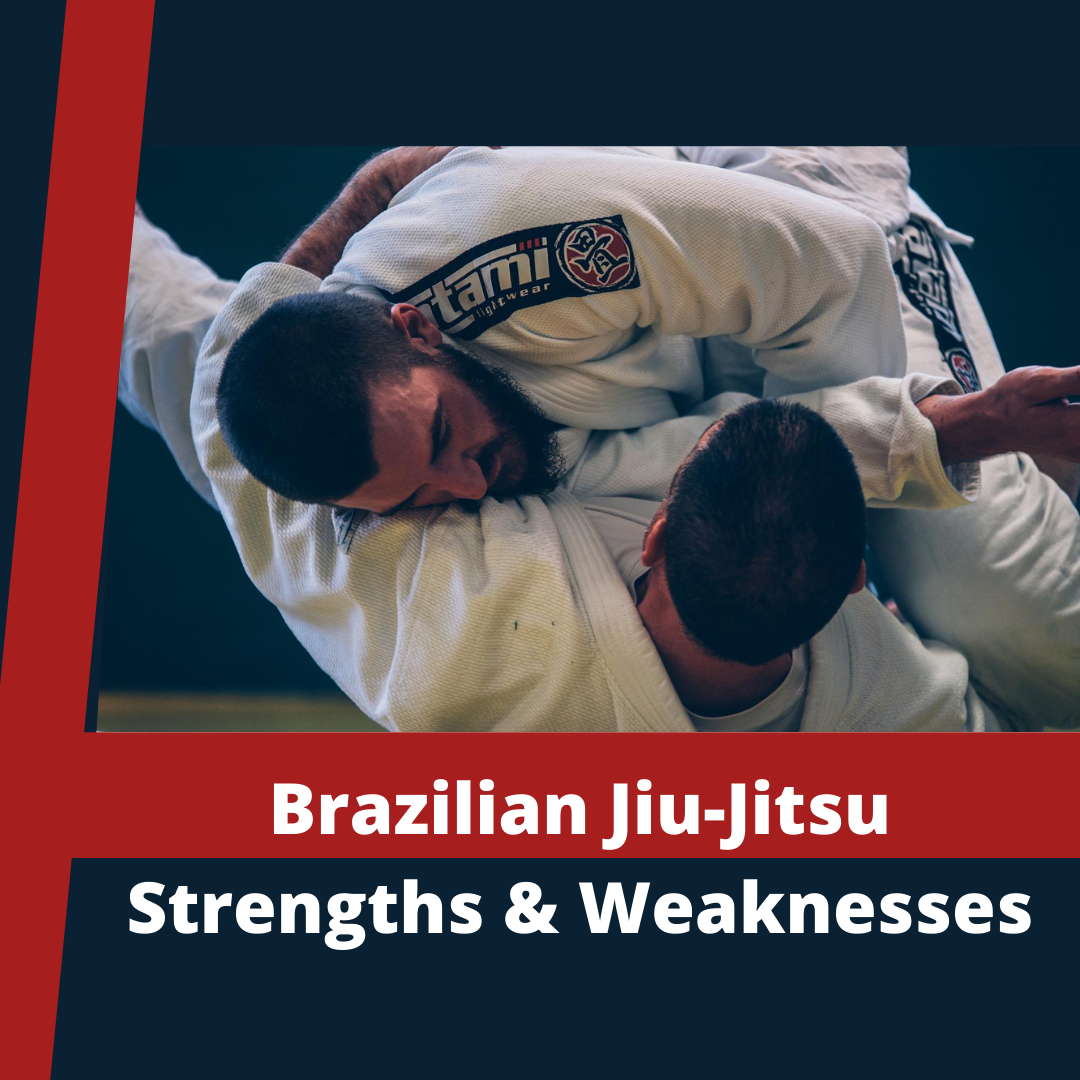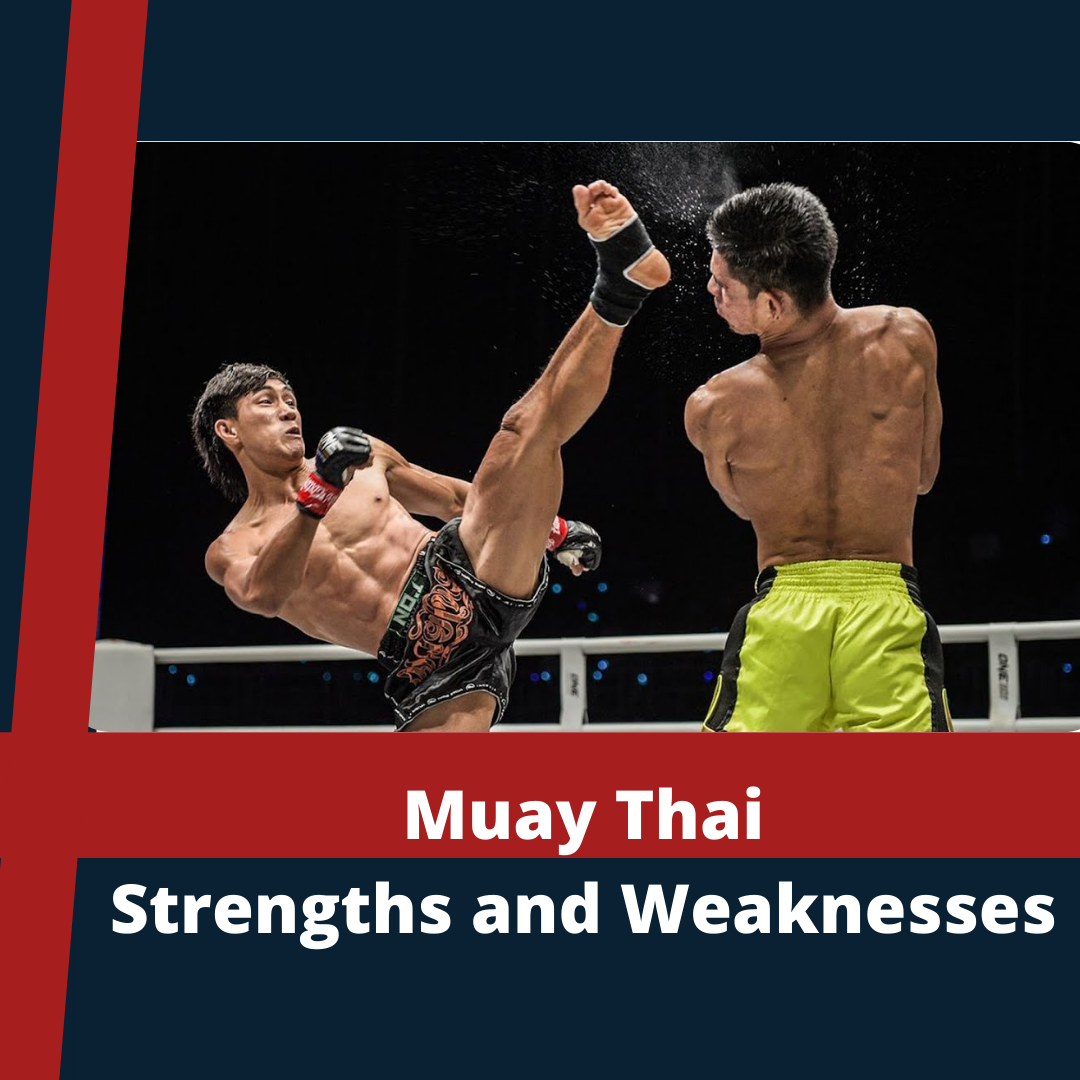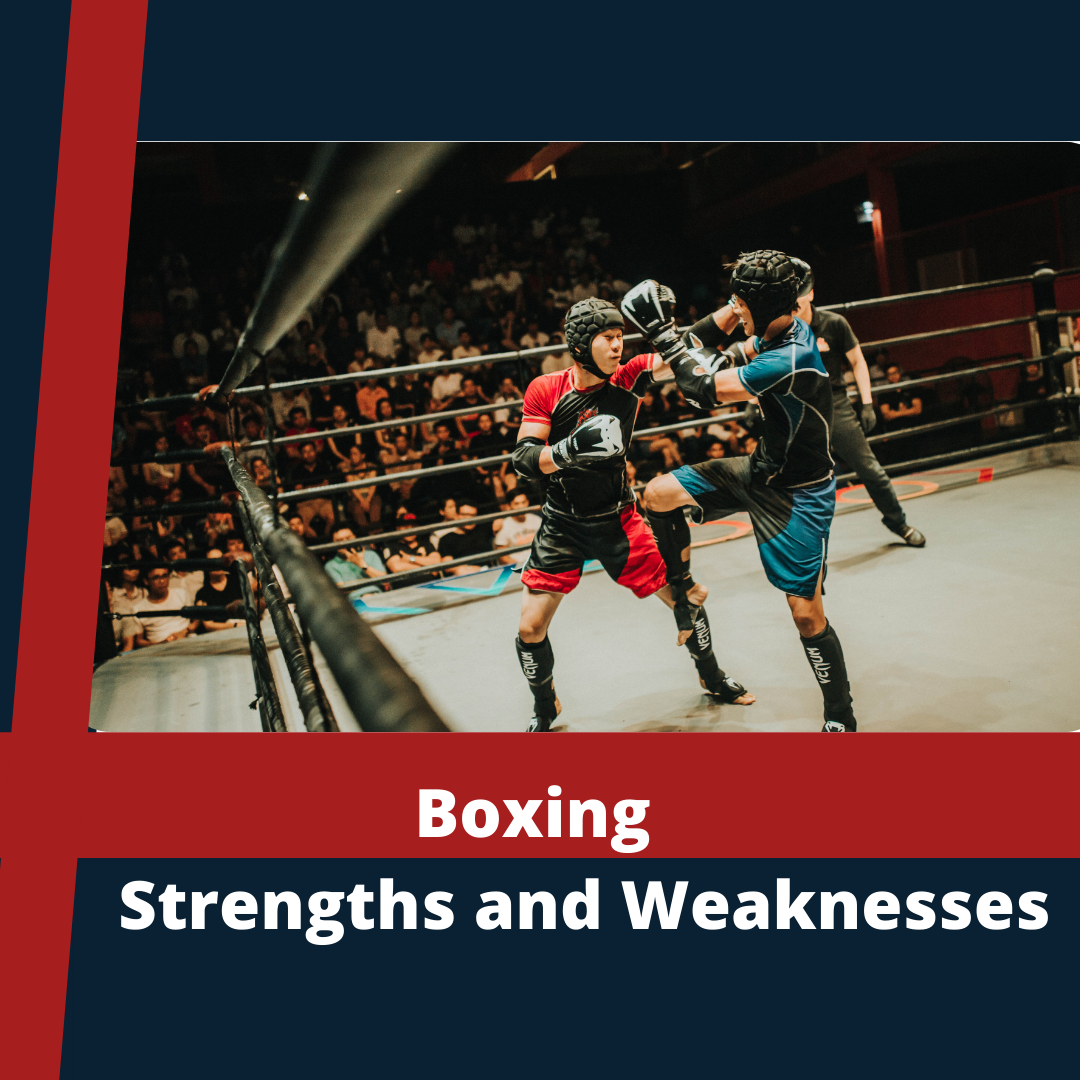From getting a full body workout to improving your coordination, flexibility and confidence, there are many reasons why someone may want to train in a martial art.
Arguably the most significant reason is self-defence. Fortunately, there are many different types of martial arts that you can train in – each with its particular strengths and weaknesses.
If you are wondering which has the best self-defence techniques, we have shared the strengths and weaknesses of three of the most popular martial arts: Brazilian jiu-jitsu, Muay Thai, and boxing.
Brazilian Jiu-Jitsu: Strengths & Weaknesses

Brazilian jiu-jitsu (BJJ) is known for unique techniques that help smaller or weaker opponents beat bigger and stronger ones. It requires the use of your entire body, making it the ideal martial art for staying in shape.
Unlike other martial arts, people practice BJJ for the rest of their lives to stay in good health. Karate and taekwondo can damage joints, with injuries becoming more common and potentially more devastating. BJJ, however, while not without risk of injury, is a better sport to practice as you age. Let’s find out about the strengths and weaknesses of BJJ.
Strengths:
- The strengths of BJJ include excellent self-defence and physical fitness techniques that enable a smaller person to successfully defend themself against a larger one. It leans on principles like leverage and positioning to overcome a stronger opponent. It also teaches you how to control your opponent on the ground by providing you with techniques like chokeholds and joint locks to form a dominant position.
- BJJ combines judo with other grappling martial arts to bring down an opponent from a standing position and force them to the ground. Different BJJ chokeholds, like the rear naked choke, the triangle choke, and the north-south choke, are painful yet effective tools to defeat attackers.
- Parents are often wary of enrolling their children in martial arts, thinking they are not safe. However, BJJ is comparatively safer than other martial arts. While training, your child may get bumped but won’t get punched in the head. Like other combat sports, it does not use striking to win or overwhelm the opponent. It also has a low risk of concussion.
Weaknesses:
As mentioned, BJJ does not teach striking. So, as a fighter, if you are trained only in BJJ and go up against a more proficient striker, you may face difficulty striking back as it lacks stand-up training for punches and kicks. So, if you cannot manage to get your opponent on the ground as fast as possible, it can put you at a disadvantage.
Since it is primarily a grappling art and involves two people, BJJ can be limited when it comes to fending off multiple attackers. That’s why most BJJ artists learn and mix different martial arts to generate unique styles to be applied in various situations.
Muay Thai: Strengths and Weaknesses

Muay Thai (MT), also known as the ‘art of eight limbs’, makes use of eight points of contact, namely punches, elbows, knees and kicks. It is one of the most lethal types of martial arts because it has very few rules and is designed to quickly and violently immobilize your opponent. Here, the approach is not defensive; rather the focus is to win the fight using the eight limbs.
Strengths:
- From the above-mentioned description, it is evident that MT is one of the best fighting systems. It is an excellent tool for self-defence as there are no unnecessary choreographed routines or philosophies to learn, and the primary goal is to eliminate your opponent as quickly as possible.
- It is a strike-oriented martial art that emphasizes power and teaches you to use every part of your body as a weapon. It teaches you multiple ways to incapacitate an attacker with each limb and go for the knockout blow. This is great for life and death situations where you need to stop an attacker by any means possible.
- It is fast-paced and intense, so you build endurance and increase cardiovascular fitness when practicing Muay Thai.
- MT has its own form of grappling, called clinching, which gives fighters an edge to take down their opponents or set them up for a dizzying knee kick to the head. These fighters are trained to be tough. Their shins and fists are hardened from hours on the heavy bag, and thanks to full-contact sparring, they are just as used to taking a blow as they are delivering one.
- Unlike BJJ, Muay Thai is great for taking on multiple attackers, as it allows you to combat them one at a time while remaining mobile and on your feet. You’re also trained on how to gauge distance so that you can deliver the deadliest blows and kicks.
Weaknesses:
Frequent injury is one of Muay Thai’s disadvantages. And because the technique focuses mostly on kicks and arm punches, practitioners are more susceptible if forced to the ground. Muay Thai also doesn’t use the bobbing and weaving technique we frequently see in other styles, like traditional boxing. This can pose a challenge in the ring if you’re up against someone who can weave with ease. This is because they could exploit the fact that you can’t easily protect yourself and will easily dodge your shots.
Boxing: Strengths and Weaknesses
Boxing is one of the oldest and most popular martial arts for striking and general physical conditioning. When people box for fitness and exercise, they often use a punching bag to avoid contact that can lead to concussions and other injuries. Let’s see what strengths and weaknesses boxing possesses.
Strengths:
- The main focus of boxing involves attack and defence with your fists. So, if you want to use yours as a weapon, boxing is the perfect martial art for you.
- Boxing teaches you to block, dodge and parry punches with ease, all the while delivering fast and powerful punches. The four basic punches are the jab, the cross, the hook and the uppercut.
- Practising boxing not only improves your self-defence skills but is also a great way to improve your fitness. It is also a fun way to challenge your mind and body.
Weaknesses:
One of the biggest disadvantages of boxing is the risk of injury, either during training or a fight. Of course that applies to all combat sports.
The limitation of boxing is that it only teaches you how to make use of your hands. There are no kicks in boxing; nor are there any knee or elbow strikes. In a crisis moment where you want to defend yourself, use everything you have at your disposal.
Each martial art has its share of strengths and weaknesses. But training in multiple martial arts such as BJJ, Muay Thai and boxing can make you a far better-rounded fighter. If you want to know more about martial arts that benefit your self-defence skills, contact Legends MMA.

